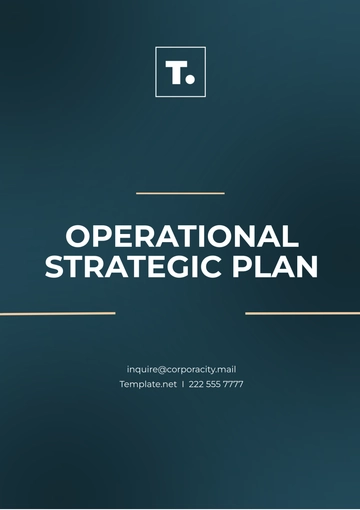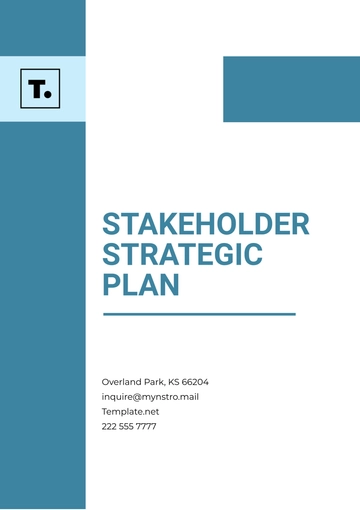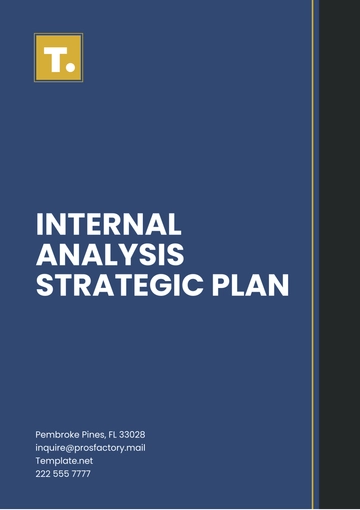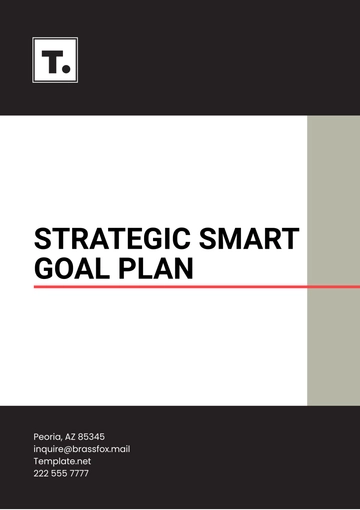Free Stakeholder Strategic Plan

Prepared by: [Your Name]
Company: [Your Company Name]
Date: January 15, 2050
I. Executive Summary
This Stakeholder Strategic Plan outlines our organization’s comprehensive approach to identifying, engaging, and managing stakeholders effectively. As we move into a new decade, it is crucial to adapt our strategies to the evolving landscape and ensure that stakeholder needs and concerns are proactively addressed. This plan is designed to foster positive relationships and support our overarching goals of sustainability, innovation, and community engagement. By implementing clear strategies for effective communication, collaboration, and alignment of interests, we aim to create a robust framework for stakeholder engagement that drives mutual success.
II. Stakeholder Identification
A. Key Stakeholders
Customers: Individuals and organizations who purchase or utilize our products and services. Their feedback is essential for continuous improvement and innovation.
Employees: Our workforce, whose satisfaction and engagement are critical to our operational success and organizational culture.
Investors: Stakeholders who provide capital and expect a return on investment. Maintaining their trust and support is vital for our financial health.
Suppliers: Partners who supply the goods and services necessary for our operations. Strong relationships can enhance quality and reliability.
Regulatory Agencies: Government bodies that enforce laws and regulations impacting our industry. Compliance and proactive engagement with these entities are essential.
Community Groups: Local organizations and residents impacted by our operations. Their involvement fosters goodwill and community support.
B. Stakeholder Mapping
Our organization employs a stakeholder mapping process to effectively categorize stakeholders based on their influence and interest. This involves identifying stakeholders, analyzing their relevance to our objectives, and classifying them into quadrants in a power-interest grid. This mapping process will enable us to prioritize engagement efforts and allocate resources effectively.
III. Stakeholder Analysis
A. Needs Assessment
An in-depth needs assessment for each stakeholder group will be conducted to determine their expectations, concerns, and how they perceive value from the organization. This assessment will include surveys, focus groups, and interviews to gather qualitative and quantitative data.
B. Influence and Impact
The analysis will evaluate each stakeholder's influence on the organization and the impact of our operations on them. This will enable us to tailor engagement strategies accordingly. For example, understanding the regulatory landscape can guide our compliance initiatives and reduce potential risks associated with non-compliance.
IV. Engagement Strategies
A. Communication Plan
Our communication plan involves regular updates through newsletters, reports, and meetings to ensure stakeholders are informed and engaged. We will utilize digital platforms and social media to enhance reach and interaction, ensuring timely information dissemination.
B. Collaboration Approaches
Workshops and Brainstorming Sessions: Facilitating collaborative sessions to gather input on projects and initiatives from various stakeholder perspectives.
Joint Task Forces for Key Projects: Creating dedicated teams comprising representatives from key stakeholder groups to work on critical projects.
Open Forums for Feedback and Suggestions: Hosting quarterly town hall meetings to encourage open dialogue and solicit feedback from stakeholders.
C. Interest Alignment
Strategies to align stakeholder interests with organizational goals include:
Shared Ownership Programs: Initiatives that allow employees and key stakeholders to share in the ownership of projects or initiatives.
Incentive Structures: Developing reward systems that recognize and incentivize stakeholder contributions and achievements.
Mutual Benefit Analysis: Regularly conducting analyses to ensure stakeholder needs are met while supporting organizational objectives.
V. Action Plan
A. Strategic Objectives
Enhance stakeholder communication channels by the end of Q2 2050.
Implement a stakeholder feedback system by the end of Q3 2050.
Establish a cross-functional stakeholder task force by the end of Q4 2050.
B. Timeline & Milestones
Milestone | Deadline |
|---|---|
Develop stakeholder database | End of Q1 2050 |
Launch stakeholder newsletter | Mid-Q2 2050 |
Conduct first workshop | End of Q3 2050 |
Complete needs assessment | End of Q4 2050 |
VI. Monitoring and Evaluation
A. Performance Metrics
To measure the effectiveness of our stakeholder engagement efforts, we will track:
Stakeholder Satisfaction Scores: Utilizing surveys to gauge stakeholder satisfaction with our communication and engagement initiatives.
Engagement Levels and Attendance: Monitoring participation rates in workshops, forums, and other engagement activities.
Feedback and Improvement Requests: Analyzing feedback for actionable insights to refine our strategies continuously.
B. Feedback Loops
Implement structured feedback loops, including surveys and follow-up meetings, to continuously gather stakeholder input and adapt strategies as necessary. This ongoing dialogue will help identify areas for improvement and build stronger relationships.
C. Reporting
Regular reporting structures will provide insights into engagement effectiveness, allowing for data-driven decision-making and strategy refinement. Reports will be shared with key stakeholders to maintain transparency and demonstrate our commitment to continuous improvement.
- 100% Customizable, free editor
- Access 1 Million+ Templates, photo’s & graphics
- Download or share as a template
- Click and replace photos, graphics, text, backgrounds
- Resize, crop, AI write & more
- Access advanced editor
Manage stakeholder relationships effectively with our Stakeholder Strategic Plan Template from Template.net. This customizable, editable template helps you align your strategy with stakeholder interests, communication, and engagement goals. Easily editable in our AI Editor Tool, it allows you to tailor your plan to reflect the priorities and needs of each stakeholder group. Ideal for businesses and nonprofits, this template ensures a strategic approach to stakeholder management.





























